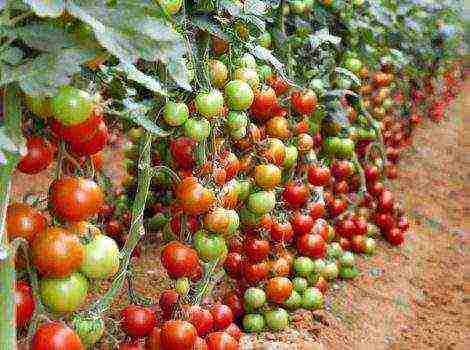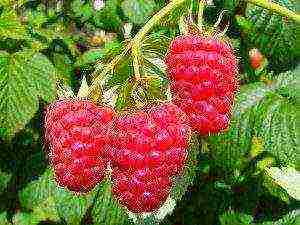Content
To get green onions 2-3 weeks ahead of time, the seedlings are planted before winter. But is any variety of onions suitable for this purpose?
In this article, we will tell you which onion varieties are ideal for planting before winter.
How to choose the right winter onion variety?
Not all onion varieties are equally suitable for planting before winter. So, southern varieties are not at all suitable for this - they need a long daylight hours. The varieties that need to be planted in spring are also not suitable: such specimens do not tolerate wintering well and, after freezing, begin to shoot.
Therefore, for subwinter planting, choose varieties and hybrids of onions with medium or short daylight hours, which can form a bulb in a 12-14 hour day.
What should be the planting material?
Even if a variety is suitable for winter cultivation, it does not mean that any of its bulbs will be suitable for planting. For a good harvest, choose planting material that meets 2 basic requirements:
- the diameter of the seed is less than 1 cm;
- the bulbs are healthy, without signs of damage.
Winter varieties of onion sets
Growing winter onions gives a lot of advantages to summer residents:
- allows you to save the sevok from decay and shooting;
- allows you to get larger heads;
- does not require watering until mid-May (there is enough moisture in the soil until the end of spring);
- early maturation.
The disadvantages of this method can be considered a lower yield compared to spring planting, as well as a slightly worse keeping quality of the crop.
Arzamas
Mid-season variety. Bulbs are dense, rounded or elongated-rounded with white flesh and dark yellow outer scales with a brown tint. The variety is cold-resistant, but it is strongly affected by peronosporosis and damaged by onion flies.
| Use | Taste | Growing method | Bulb weight (g) | Keeping quality | |
| spicy |
40-90 |
good | |||
Danilovsky
Mid-season variety. The bulbs are flat, round-flat, with dry scales of a dark red color and juicy pulp of a light purple hue. Copt is relatively stable to pero-rotation.
| Use | Taste | Growing method | Bulb weight (g) | Keeping quality | |
| peninsular |
50-100 |
good | |||
Radar
Mid-season variety. The bulbs are large, flat-round with light yellow dry scales. Resistant to shooting.
| Use | Taste | Growing method | Bulb weight (g) | Keeping quality | |
| peninsular |
|
150-300 |
good | ||
Red baron
An early ripe onion variety. The bulbs are round, flattened at the top and bottom, red or dark purple on the outside and inside. For larger bulbs, this variety is recommended to be grown through seedlings.
| Use | Taste | Growing method | Bulb weight (g) | Keeping quality | |
| peninsular |
|
130-150 |
excellent | ||
Senshui
Early ripe variety. The bulbs are large, flat-round with yellow-brown dry scales. Resistant to shooters and downy mildew.
| Use | Taste | Growing method | Bulb weight (g) | Keeping quality | |
| spicy |
150-250 |
excellent | |||
Strigunovsky
Early ripe variety. Bulbs are dense, rounded, with a slight downward and upward slope, with white flesh and dry scales, yellow with a pink or brown tint. In some years, this variety is strongly affected by diseases and pests.
| Use | Taste | Growing method | Bulb weight (g) | Keeping quality | |
| spicy |
45-80 |
excellent | |||
Sturon
Mid-season variety. The bulbs are round, with white flesh, densely covered with a yellow-brown skin. Resistant to diseases and shooting.
| Use | Taste | Growing method | Bulb weight (g) | Keeping quality | |
| spicy |
|
70-180 |
excellent | ||
Centurion F1
Mid-early hybrid with medium-sized, round-elongated bulbs covered with golden brown outer scales. The pulp is white, juicy. Resistant to shooting and major onion diseases.
| Use | Taste | Growing method | Bulb weight (g) | Keeping quality | |
| spicy |
65-150 |
excellent | |||
Shakespeare
Mid-season variety. The bulbs are large, rounded, with brown dry scales and white juicy pulp. The variety is cold-resistant and resistant to shooting.
| Use | Taste | Growing method | Bulb weight (g) | Keeping quality | |
|
|
peninsular |
|
100-300 |
good | |
Stuttgarter rizen
Early ripe variety. Bulbs are dense, flat and flat-round with golden brown dry scales and white flesh. Strongly susceptible to downy mildew, susceptible to neck rot.
| Use | Taste | Growing method | Bulb weight (g) | Keeping quality | |
| spicy |
|
50-100 |
excellent | ||
Ellan
Early ripe variety. The bulbs are round, with dry straw-colored scales and white flesh. It is slightly affected by peronosporosis, cold-resistant.
| Use | Taste | Growing method | Bulb weight (g) | Keeping quality | |
|
|
sweet |
100-400 |
good | ||
All the varieties described above have good winter hardiness and are perfect for planting before winter. Choose the variety you like and enjoy your own early onion harvest!
Foreword
Winter crops are plants that are planted in the fall and harvested in the spring. In the understanding of most people, winter crops are associated only with cereals: rye, wheat, barley. But over time, people began to optimally use the capabilities of Mother Earth and many agricultural crops began to sow in the fall. These include winter onion varieties.
Benefits of growing winter onions

Growing winter onions
- Those who are engaged in gardening know well that storing onions until spring is not an easy task. There is no such problem when growing winter onions. The entire stock will not rot and will not let the arrows go.
- When planted in winter, the bulbs grow larger than when planted in spring. This is possible due to the fact that the optimal time in the spring can be missed. When planting this crop in the fall, this will not happen.
- It is not necessary to water the planted onions until mid-May, as the soil still retains sufficient moisture. The time saved can be devoted to planting other crops.
- Winter onions ripen several weeks earlier than spring crops. This means that it will be possible to use onions in the diet already at the end of May, when the body will need vitamins.
Disadvantages of winter onions
Of course, nothing is perfect, so the winter planting has its drawbacks. There are not many of them, but they are worth mentioning.
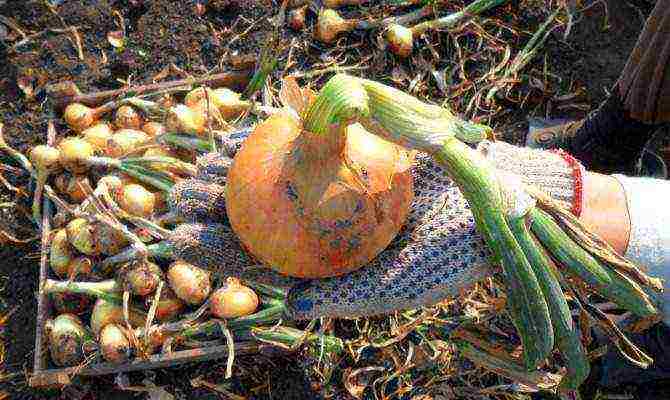
Winter planting onions
- The yield of winter onions is slightly lower. This is due to the fact that during the cold period, some sets do not withstand winter conditions: temperature extremes, excessive humidity or severe frosts. But now breeders take these factors into account, and there are varieties that survive all these conditions very comfortably.
- Bulb heads are stored somewhat worse than their spring counterparts.
If we compare the pros and cons of growing this crop in winter, then undoubtedly it is worth sowing winter varieties.
Basic concepts
Due to the fact that in summer the day begins to decrease from July, gardeners had a problem with choosing sets for planting onions. Therefore, it was possible to apply only two methods for planting:
- growing an annual podzimny culture or early spring sowing;
- two-year sowing.
All onion varieties can be divided into two types:
- long-day;
- short-day.
For planting onions, so as not to waste energy and money, you need to take into account a few basic rules.

Winter cultivation method
- For the winter method of growing onions, only special hybrid varieties should be taken.
- Onions should not be planted in acidic soil. Not only will it fail to yield, it may not even germinate. The soil should be sandy loam or loamy.
- Planting onions in the garden is preceded by a thorough cleaning of the site from its predecessors.
- Don't expect a good harvest in a garden that has grown any bulbous crops for the past five years. Bulbous crops do not like the soil on which celery, legumes or potatoes grew.
- The onion bed should not be in a place where water stagnates. Otherwise, the heads may blow out.
- It is better to choose a place that is not shaded.
- In order for the bed with the planted onions not to freeze, it is better to make them high. It is necessary to provide for snow retention in winter.
- It is better to plant winter onions a month earlier than the frost begins. Around mid-October.
How to choose the right winter onion variety
Winter sowing provides that the bulbous planting will be selected accordingly. Otherwise, the result may be, to put it mildly, not the one expected. Here are some general guidelines for choosing seed varieties for winter sowing.

Selection of seed varieties for winter sowing
- It is best to take hybrid varieties with short or medium daylight hours. Why they? These hybrid varieties begin to form bulbs already at a 12-hour day.
- Onion varieties intended for planting in spring are not recommended for planting in winter. They overwinter badly, and if they freeze, they begin to shoot.
- One of the best options for winter onion sets, according to professionals, are Dutch varieties.
What should be the planting material
- The onion set should be no more than 1 cm in diameter.
- The smaller the onion sets, the smaller the arrow will be or there is a high probability that it will not be there at all.
- For planting, the seedlings must be healthy: firm to the touch, without stains and rot.
Winter varieties of onion sets
Among the variety of such varieties, several of the most popular among gardeners should be noted.
Variety "Shakespeare"
One of the most widespread and popular varieties for winter sowing. The bulbs are round and large in size, with white juicy flesh and a semi-sharp taste. Another distinctive feature of this variety is a very dense, juicy brown integumentary scales. This helps to withstand low temperatures even down to minus 18 degrees. When compared with other varieties, then for them a minus maximum of -15 degrees. So in terms of endurance, Shakespeare is the clear favorite. Its head ripens early enough, in about 75 days the first crop can be harvested. Unpretentious and does not require special care.
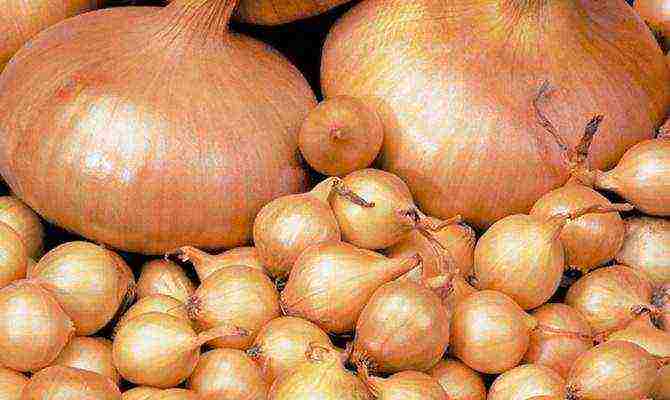
Shakespeare bulbs
Variety "Radar"
Also a good winter appearance, in no way inferior to the Shakespeare variety. Has a large head - an average of 150 grams. With good care, you can reach 250-300 grams. The scales of the Radar onion are golden yellow. The advantage of this variety is excellent taste and good germination of seedlings. Very good harvest.
Ellan variety
This type of planting material belongs to the short-day form. Its bulbs are round, with delicate golden scales, with a white, sweetish pulp on the palate. One head has a weight of 80-120 grams. A big plus of this variety is the fact that it ripens very quickly - already in June, when winter stocks are exhausted and the new spring crop is not yet ripe.
Variety "Senshui"
High-yielding and early type of sets. Resistant to low temperatures. The main advantage of the Senshui variety is its keeping quality and resistance to shooting. The bulb is medium in size with yellow-brown scales. Has a pungent taste. Stores well.
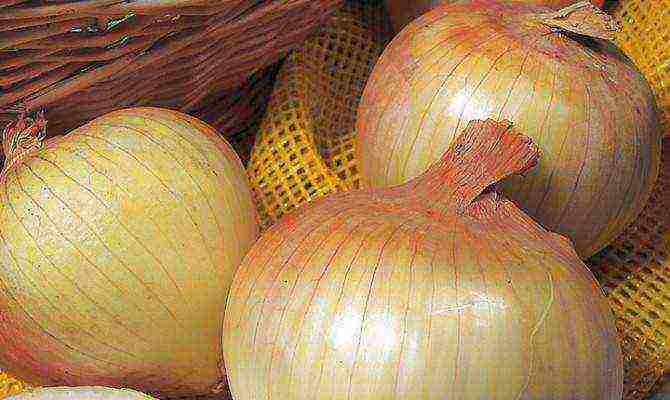
High-yielding variety "Senshui"
Variety "Stutgarten Riesen"
Single-primordial variety.It takes two months from the regrowth of the seed to full maturity. Refers to high-yielding varieties. It has flat-round fruits with a golden brown color. Bulb weight - 150-200 gr. Ideal for planting in areas with sandy loam soil. Stores well. Has a pungent taste.
Variety "Sturon"
Large ellipsoidal bulbs. The inner scales are slightly greenish, covered with a golden coating. Refers to medium early varieties. Reaches ripeness in three - three and a half months. Differs in high yields and storage capacity - up to 8 months.
Variety "Baron"
Great for open field cultivation. Early ripe large bulbs with a high vitamin C content and a spicy taste. Among professional vegetable growers, it is considered one of the best for winter planting.
Variety "Centurion"
An early maturing, resistant variety with a stable yield and 100% germination. Medium onion with a spicy taste.
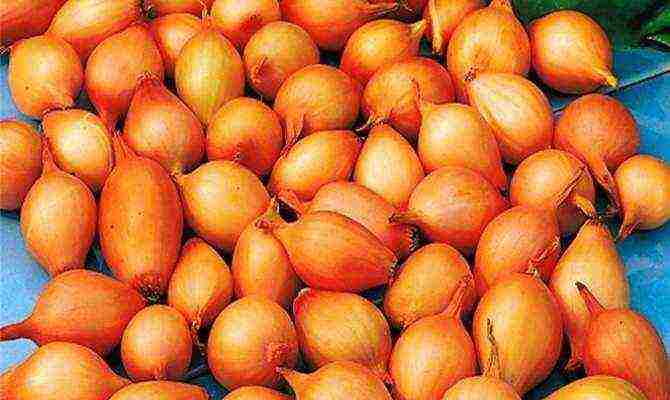
Early ripe variety "Centurion"
Variety "Kip-Well"
The name of the variety translates as “Well stored”. Hence, his and the main quality, for which he is loved and planted by gardeners. Medium-sized elongated onion head weighing 100-150 grams. Resistant to pests and diseases. It tolerates subzero temperatures well.
Variety "Bamberger"
German breeders have developed a medium late variety hybrid. The fruit is elongated with yellow scales. Ideal for growing from seedlings. The bulbs are small with a mild taste.
Rate the article:
(0 votes, average: 0 out of 5)

Winter onion varieties are highly popular among both experienced gardeners and beginners. On the market today, you can buy copies of the Dutch selection, as well as local types of vegetables that are not inferior in quality to foreign brands. Before choosing, you should find out the characteristics and description, clarify the cultivation features, and most importantly, decide whether you are going to grow a vegetable for a large turnip or green feather ...

Winter onion and features of its cultivation
In the summer, one of the first on the beds appears all kinds of greenery, it is the first and ends, freeing those same beds. So that they are not empty, about 3-4 weeks before the onset of stable cold weather, they can be filled with winter onions, which means that in spring you can enjoy fresh and tasty green feathers before spring ones.
Winter onion is a vegetable bred by breeders for wintering in the open field. Some varieties of winter onions are grown on a feather, other varieties of vegetables are planted by gardeners specifically for harvesting bulbs - such an onion perfectly tolerates winter in the ground, gives young green shoots first in spring, and you can harvest a crop several weeks earlier than summer varieties.
Dutch winter onion varieties need to be grown following some simple rules:
- Winter onions should be planted in the ground a month before the onset of permanent frosts.
- In Siberia, in the Urals, in the regions of the North-West and the Far East and in other regions with a harsh climate, it is recommended to use special agrofibre to shelter winter onions, in regions where the temperature in winter does not drop below -15 ْ C, shelter is not required
- If you plant onions in a garden bed where something has already grown, be sure to loosen the soil well, clean it from the roots
- If the soil in which the winter onions are planted is not rich in nutrients, feed the plantings using organic or mineral fertilizers
The most popular varieties of winter onions and their characteristics
Varieties of winter onion sets are very diverse, each has its own characteristics. Gardeners distinguish a number of varieties that are especially popular, here are some of them:
Shakespeare - an early variety of onions before winter, its main feature is the almost complete absence of arrows.Shakespeare winter onion perfectly tolerates winter due to dense husk, distinguished by long keeping quality, its bulbs are large, brownish, onion pulp is juicy, has a white color;
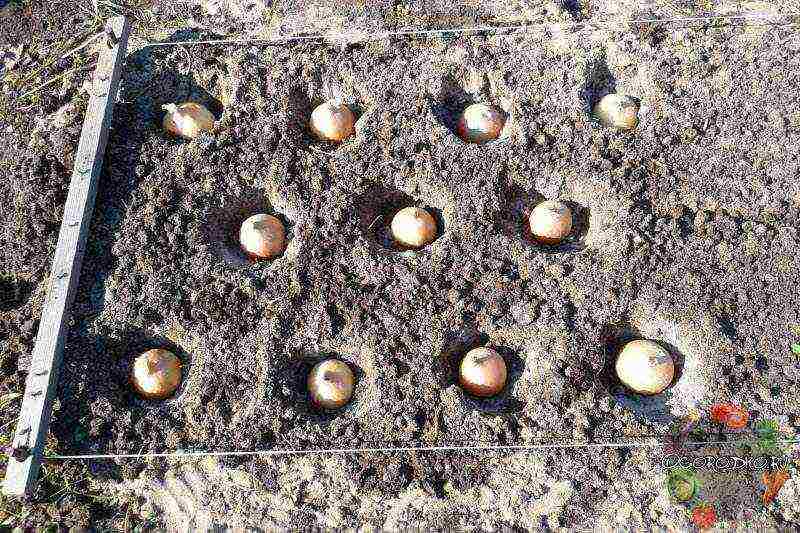
Shakespeare onion - pictured
Radar - one of the most popular varieties of winter onions, but it cannot be stored for a long period of time. As a rule, the Radar winter onion is grown for eating raw, a feature of which is excellent resistance to flowering and arrow formation;

Radar onion - pictured
Stuttgarter rizen
- also one of the popular varieties among housewives, which has long appeared on the territory of our country and during this time has managed to establish itself. This is the best option for those looking for a variety with high keeping rates and good yields, this is an early type of onion;
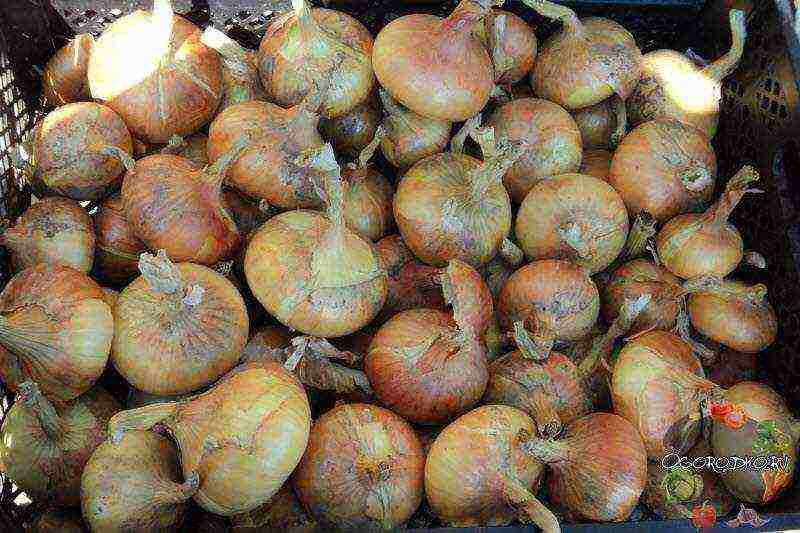
Stuttgarten onion - pictured
Centurion Is a disease-resistant variety that can be stored well throughout the winter. Centurion bulbs are neat in shape with a small bottom, have a beautiful straw color, practically do not shoot, this is one of the most productive varieties of onions before winter;

Centurion onion - pictured
Baron - a variety of early ripeness, characterized by a high content of vitamin C in the composition, the weight of the onion is about 150 g, the taste characteristics of the onion contribute to its use in its raw form - it has a slight pungency;
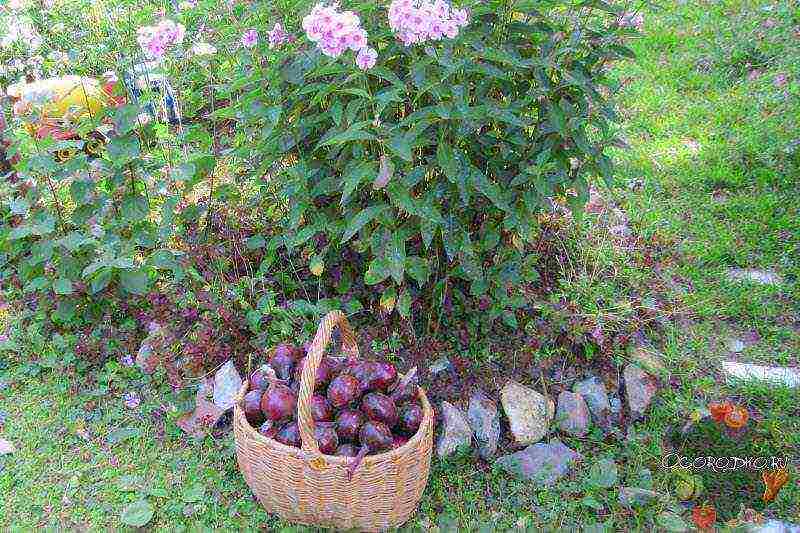
Baron onion - pictured
Ellan - a variety that ripens in June, when last year's stocks have already exhausted themselves, and the new spring plantings have not yet ripened, the bulbs are round, golden in color, the flesh is white, slightly sweet in taste, the weight can vary from 80 to 120 grams;

Ellan onion - pictured
Senshui - early seedlings with high yields, tolerates even very low colds in the ground, does not shoot, is well stored, the fruits are of medium size, brownish in color, slightly spicy on the palate;
Of course, these are far from all varieties of winter onions that breeders have managed to breed, but the most productive and resistant to wintering in the ground.
Advantages and disadvantages of planting onions before winter
Like any vegetable, winter onions have both certain advantages, thanks to which they are so in demand among gardeners, and some disadvantages that must be taken into account when growing. So, the indisputable advantages of a vegetable can be considered:
- Excellent keeping properties, winter onions lie perfectly all winter with proper organization of their storage, they will not start to rot or mold, which cannot be said about summer varieties of vegetables
- Onions overwintering in the ground, by the time of harvest, will bear much larger fruits than the one that was planted in the garden in spring. When planting in the spring, many gardeners miss planting time, and the onion does not have time to take strength and form to the desired size
- Varieties planted before winter do not need to be watered until the second half of May - the soil still retains its natural moisture. Instead of watering the onion garden, you can do other gardening activities.
- Winter onions ripen 3-4 weeks earlier than varieties planted in spring, which means that you can eat fresh vegetables in late spring - early summer. It is during this period that our body requires vitamins.
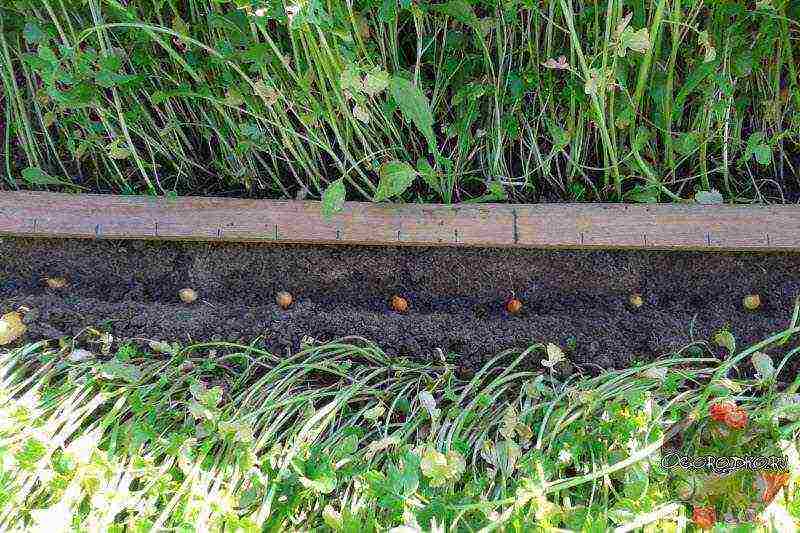
Planting winter onions - pictured
They have varieties of winter onions and their disadvantages. So, the main drawback is that the yield indicators for onion sets are slightly less than those planted in spring. This is due to the fact that during the winter some individuals cannot withstand severe frosts, sudden temperature changes, high humidity, etc.
However, to date, scientists engaged in the selection of this vegetable are trying to take these factors into account when developing new varieties that are resistant to wintering. As you can see, onions that are planted in the ground before winter have much more advantages. Have a nice harvest!
Onions are a popular vegetable crop, which is necessarily grown in private backyards and summer cottages. It is usually planted in the spring. Many gardeners do not know that there are winter varieties.
Planting this useful vegetable in the winter began relatively recently. It was only in the early 90s of the last century that the first mention of the fact that it was possible to use the bulbs of some varieties for winter cultivation appeared.
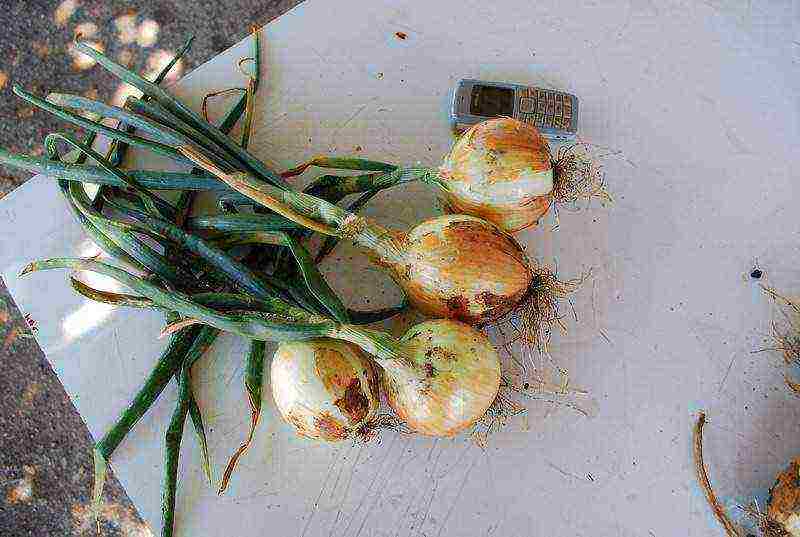
Cultivation of winter onions: pros and cons
Sale of spring onion sets (tykanka) begins in February. When buying planting material, gardeners are faced with the problem of its safety before sowing.
Sevok is very sensitive to the slightest changes in storage conditions (humidity, temperature). It can start to germinate or deteriorate (rot), but it must be kept until the end of April or even until May. Planting material that has not been properly stored can go into the arrows when landing.
There are no such problems with winter onions. High-quality seedlings begin to be planted from the second half of August until the first frost (depending on the variety and region).
The important advantages of winter onions include larger and more juicy heads than those of ordinary spring onions. This is due to the fact that in the spring it begins to develop in the most favorable period. Determining the optimal planting time for spring crops is difficult.
You will not have to water the winter onions until mid-May, since there is enough moisture in the soil for its development and growth.
It is important that winter onions ripen three to four weeks earlier than spring onions. And juicy green feathers and bulbs for culinary needs will be by the end of May.
The main disadvantage of the winter crop is that its yield is slightly lower than that of the spring crop. There is also an opinion that winter onions are not preserved as well as the harvest of spring varieties. However, after preliminary drying (with dried husks), mature bulbs of winter varieties can be stored for quite a long time without losing their presentation and taste.
Winter varieties: choosing the right one
For winter farming, it is recommended to choose specially bred plants, frost-resistant hybrids, varieties of short daylight hours. Onions planted in winter should form a bulb when daylight hours are 12 to 14 hours. Late varieties, as well as varieties of onions that are grown in warm southern regions, are not suitable for planting in winter.
Incorrectly selected sowing material does not tolerate winter well, freezes, which leads to shoots of green shoots and poor yield.
Specialists engaged in winter farming give preference to varieties of breeders from Holland.
- "Shakespeare". This is one of the most popular and reliable winter varieties. It can also be attributed to early ripening vegetables: it will take only 75 days for the head to ripen. The color of the shells (scales) is brown, the pulp is white, very juicy. The taste of the onion is semi-sharp. Characteristic features of the variety: round shape and large bulbs (approx. 100 g). Also, the Shakespeare onion distinguishes among the winter variants with a dense cover shell, which allows it to withstand low temperatures (down to -180) even without snow cover. If the winter is snowy, then the bulbs can withstand lower temperatures without damage. It is worth noting that most winter crops freeze at minus 150 in the absence of snow. This variety of onion is resistant to diseases.
- "Radar". It is a promising variety with a medium ripening period. "Radar" stands out among other winter varieties for its excellent taste, as well as good performance during long-term storage. This winter onion has a good yield. The bulbs are large, weighing up to 150 grams. In favorable years and with proper care, the heads grow up to 300 grams. The color of the husk of the "Radar" winter is light yellow.
- Ellan. It belongs to the early ripening species, the harvest is harvested from mid-June, when last year's stocks ended, and before the ripening of spring onions is even more than a month. This variety can be grown using winter technology: seeds are planted (require watering) or seedlings (without watering). Ellan are beautiful straw or yellow bulbs. A round onion (diameter 6–8 cm) weighing 80–120 grams. The bulbs are juicy white with a pleasant sweetish taste.
- "Senshui" (yellow). Often, summer residents of the middle lane give preference to the Senshui winter variety. It is an early-maturing, very productive crop, resistant to shooting and powdery mildew. The bulbs are large, flat-round in shape, well stored.
- Other varieties for winter cultivation. Bulbs of such varieties as the German Stutgarten Riesen with large flat-rounded bulbs, the fruitful Sturon, which is very popular in Europe, the early-ripening Centurion variety, the frost and drought-resistant Kip-Well, and others are also planted in winter.
Onion care
Winter crops are increasingly planted for early harvesting of fresh green product (bunches) or for cutting off onion feathers. Under favorable weather conditions and proper care, 40-45 kg of winter onions can be harvested from one hectare, or from 70 to 100 thousand bunches.
The quality of the planting material
Planting material should be taken only from trusted suppliers, since the future harvest depends on its quality. It is not worth planting in winter sevok, the diameter of which is more than 1 cm. Small bulbs do not shoot arrows. In addition, onions grown from such small things are better preserved.
Sevok should be free of defects, healthy, beautiful appearance. Seed material that is stained, damaged or rotted should be discarded immediately.
Site selection
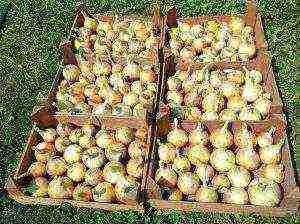
For planting winter varieties, it is recommended to choose areas well-lit by the sun, protected from the winds. When choosing a place, it should be borne in mind that in the spring the land should not be flooded, since the onion will disappear from excess moisture.
The land where any bulbous plants have been grown for the last five years is not suitable for winter seeding. Undesirable precursors of onions also include carrots, legumes, potatoes.
Ideal predecessors: rapeseed, beets, tomatoes, cabbage, mustard, cereals (except oats).
Soil preparation
Preparing the soil for winter onions should be started a couple of weeks before planting. The earth is rolled as deep as possible. Onion beds should be high (up to 20 cm), which will reduce the possibility of freezing, especially in a snowless winter. Before sowing, the earth should settle, become more dense.
At this stage, it is advisable to apply fertilizers. The best option is humus. If this is not possible, then use the complex fertilizer ekofosk (30 g / m2), potassium salt (15 g / m2) or superphosphate (add 20 g / m2).
The increased content of phosphorus in the soil helps the seedlings to winter more successfully. A good result is obtained by fertilizing the beds with winter onions with ash.
Landing
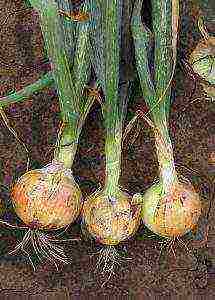
You can plant planting material in the winter in rows or nests. Place 3-4 onions in one well. The neck of the bulb must be "drowned" by a couple of centimeters. Between neighboring plants there should be no more than 10 cm, and row spacing - 15–20 cm. It is advisable to sprinkle the crops with a mixture of peat with humus or ordinary soil.
It is necessary to plant winter onions before the first frost and freezing of the soil. To successfully overwinter, it must take root (take root).
Plants should go for the winter with a developed root system, a strengthened green part: at least seven feathers should form.
The optimal time for sowing winter combs of this vegetable is the first decade of October. Although the timing of planting is very dependent on the region, weather conditions. Nigella (onion seeds, from which the set is obtained) begin to be planted at the end of August.
After planting the sevka, mulching is mandatory. Any organic material is suitable for this: dry foliage, hay, legume tops. In no case should plastic wrap be used for these purposes. You can fix the mulch with dry branches. With the onset of warm weather, the mulch is removed so that the garden bed is well warmed up by the sun and onion sprouts can germinate in time.
A very effective agronomic method for protecting winter crops from freezing is a special agrofibre (white, light-transmitting). Crops are covered with cloth only before the onset of the frost period. It is necessary to remove this cover before the beginning of the growing season.
Spring-summer care
Winter onion care is not much different from the cultivation of spring varieties. After mulch harvesting, the soil should be fertilized with urea (10 g / m2). Then thoroughly loosen the earth.
You can tame the area where the bulbs are planted with a thin layer of ash. When 3-4 green feathers are formed, the next top dressing is carried out from a mixture of potash (10 g / m2) and phosphate (20 g / m2) fertilizers.
They are best applied in liquid form. Fertilizers are dissolved in water or in a "talker" (diluted herbal infusion for watering garden plants). Experts warn: fertilizers must be applied strictly according to the recipe. Plants are better "underfeeding" than "overfeeding".
Water the onion only when necessary. In this case, drying out of the soil should be avoided. On dry soils, seedlings will be late and weak, which will affect the yield and quality of the vegetable.
The soil should be loosened thoroughly after each watering. This simple agronomic operation has a positive effect on development and growth, accelerates maturation.
Ripe bulbs are harvested before the neck dries.
